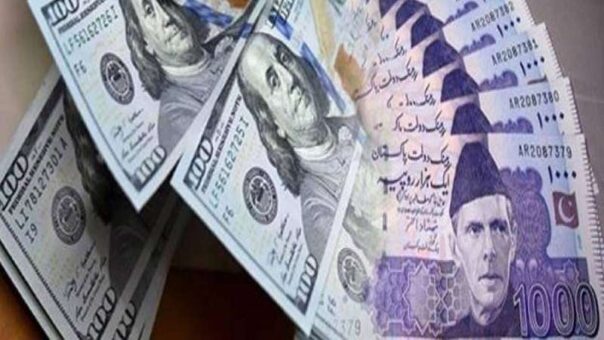Karachi, August 2, 2024 – The Pakistani rupee strengthened on Friday, appreciating by 16 paisas against the US dollar due to a rise in the country’s foreign exchange reserves. The rupee closed at PKR 278.50 per dollar in the interbank market, up from the previous day’s closing of PKR 278.66.
Currency experts attributed this gain to reduced demand for dollars for import payments and the increase in foreign exchange reserves. “The pressure on the rupee has eased significantly due to lower import payments and a steady inflow of remittances,” said a currency analyst at a leading brokerage firm.
According to the State Bank of Pakistan (SBP), Pakistan’s net foreign exchange reserves increased by $57 million on a weekly basis. By the week ending July 26, 2024, the country’s total foreign exchange reserves had risen to $14.392 billion, compared to $14.335 billion the previous week.
The official reserves held by the SBP saw a notable rise, climbing by $75 million to reach $9.102 billion by July 26, 2024, up from $9.027 billion a week earlier. This increase reflects the central bank’s efforts to bolster the nation’s financial stability amidst ongoing economic challenges.
Additionally, data from the Pakistan Bureau of Statistics (PBS) revealed that lower import payments in July 2024 also contributed to the rupee’s appreciation. On a month-on-month (MoM) basis, the trade deficit fell by 19.05%, down to $1.95 billion in July 2024 from $2.41 billion in June 2024. Although exports recorded a decline of around 10%, dropping to $2.31 billion in July 2024 from $2.56 billion in June 2024, the import bill also decreased by 14.27%, falling to $4.26 billion in July 2024 from $4.96 billion in June 2024.
“The lower trade deficit in July compared to June has alleviated some of the pressures on the rupee,” explained an economist at a local think tank. “Despite the decline in exports, the significant reduction in the import bill has had a positive impact on the currency.”
Market participants are optimistic about the rupee’s performance in the near term, citing the government’s efforts to control inflation and manage external debt. “The rise in foreign exchange reserves and a lower trade deficit are positive indicators for the rupee,” said a senior banker. “If these trends continue, we could see further strengthening of the rupee.”
The SBP’s measures, coupled with a cautious approach to import expenditures, are seen as vital steps towards ensuring the stability of the rupee. As the country navigates through economic challenges, the recent appreciation of the rupee brings a welcome respite and a glimmer of hope for a more stable financial future.
